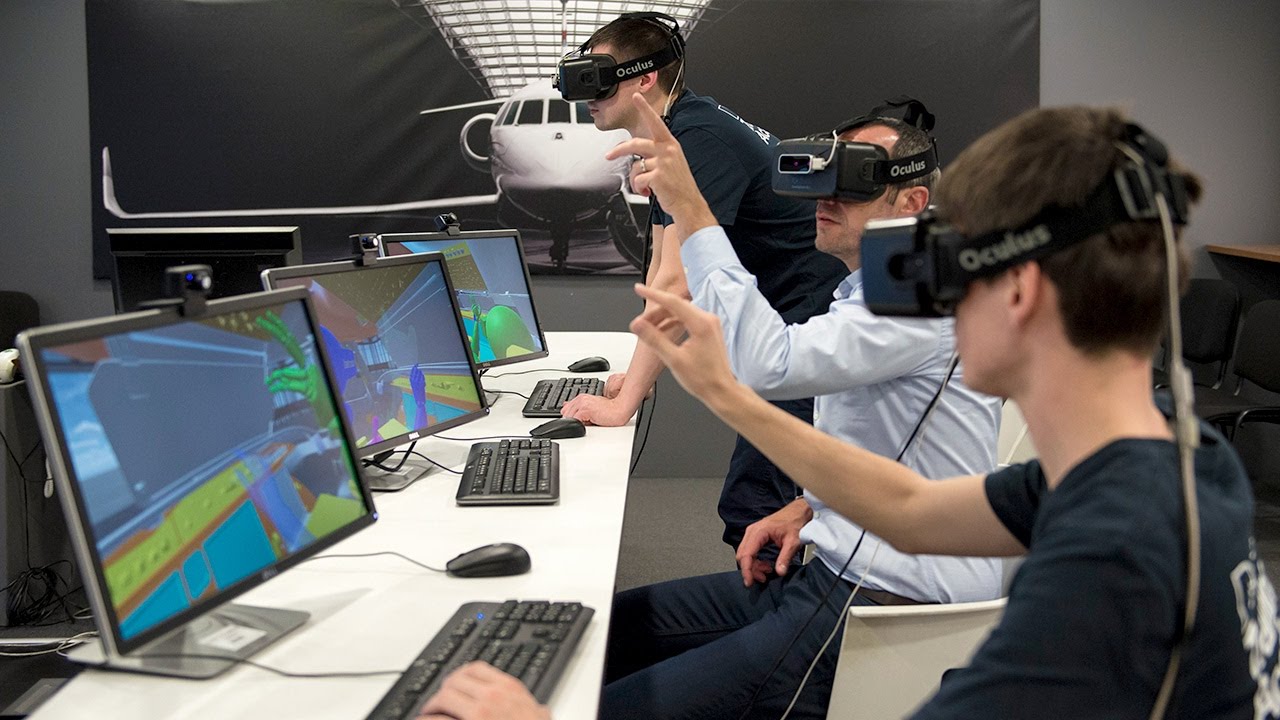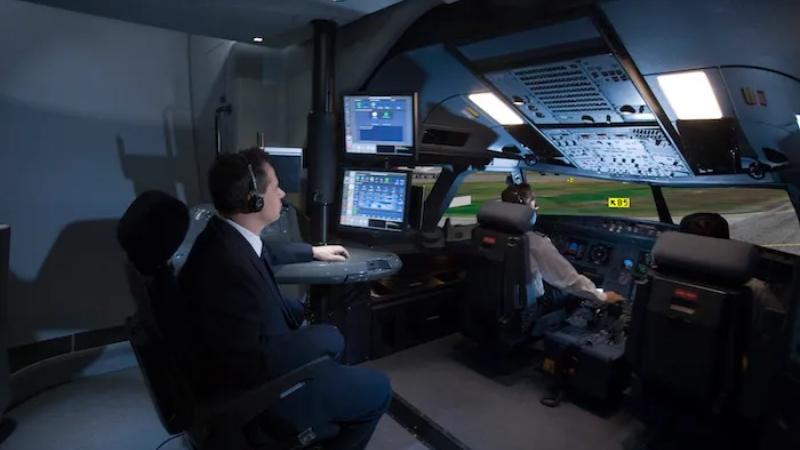Ever wondered which training method actually sticks—and more importantly, translates into real-world performance? According to the Association for Talent Development (ATD), nearly 70% of knowledge gained from conventional training is lost quickly. That’s a wake-up call: if your training doesn’t lead to lasting skills, it’s just busywork.
In this article, we break down how simulation-based training stacks up against conventional approaches, revealing why hands-on, experiential methods turn learners from passive observers into confident doers. Keep reading to discover how simulations can transform training outcomes and empower employees to perform under pressure.
Theoretical Knowledge Doesn’t Create Experts: The Limits of Conventional Training in a Fast-Changing World
Relying too heavily on lectures and slide decks has become a roadblock in today’s fast-paced work environment. Here’s why conventional approaches often fail to create competent, confident practitioners.
1. The Forgetting Curve: Why Do We Forget 90% of What We Learn?
German psychologist Hermann Ebbinghaus proved it decades ago: humans forget a massive chunk of new information within days unless it’s reinforced or applied. Passive learning—reading, listening, or watching—is especially prone to quick decay.
The result? A workforce that “knows” things on paper but struggles to apply them in practice.
2. The Knowing–Doing Gap
Even when employees understand concepts, translating that knowledge into reliable performance under real-world conditions is a whole different challenge. Without practice in a safe, realistic setting, the gap between what people know and what they can actually do widens dramatically.
3. Misleading Success Metrics
Conventional training methods often rely on shallow metrics that measure inputs rather than real outcomes. Common indicators—such as attendance numbers or end-of-course satisfaction ratings—rarely reflect whether practical skills were truly developed, or how much knowledge was retained and applied in the workplace after training ends.
"Conventional training suffers from three key issues: the rapid loss of information (the forgetting curve), difficulty applying theory in real situations (the knowing–doing gap), and dependence on superficial success metrics. These limitations make it insufficient for building the practical skills required in today’s work environment."

Lecture vs. Simulation: Who Really Builds Skills?—And Which Only Fills Minds with Information?
If conventional methods fall short, what makes simulation-based training so powerful? Let’s look at the real-world differences between passive learning and active experiential learning.
Comprehensive Comparison Table: Lecture vs. Simulation
The table below outlines the key distinctions that determine which method delivers more effective training and stronger practical skills—showing why simulation training ensures significantly higher knowledge retention and hands-on application:
|
Comparison Aspect |
Conventional Training (Lecture) |
Simulation-Based Training (Experiential Learning) |
|
Role of the trainee |
Passive recipient |
Active participant executing scenarios |
|
Learning style |
Passive (listening, reading, observing) |
Active (practice, experimentation, immediate feedback) |
|
Primary focus |
Delivering theoretical knowledge |
Developing practical skills and decision-making |
|
Evaluation method |
Theoretical tests after training |
Real-time performance evaluation within scenarios |
|
Learning environment |
Abstract, unrealistic setting (classroom) |
Immersive, reality-based environment |
|
Handling mistakes |
Seen as a failure; avoided due to lack of consequences |
Safe opportunities to learn and experiment without real loss |
Research backs this up: Edgar Dale’s Cone of Experience shows humans retain only about 10% of what they read, but retention jumps to 75% when learners practice and apply concepts themselves. That’s the essence of experiential learning—the beating heart of simulation training.
"The essential difference lies in focus: conventional training transfers information to passive learners, while simulation-based training builds skills by positioning trainees as active participants who practice and learn from mistakes in environments that mimic reality."
From Passive Listener to Decision Maker: How Simulation Transforms Engagement and Skill Development
Simulation-based training doesn’t just teach—it transforms. It turns learners into active participants, confident decision-makers, and problem-solvers
Here are three key ways simulation enhances training effectiveness:
1. A Safe Environment for Failure and Learning
Simulations let trainees make mistakes without real-world consequences. This safety net builds confidence, encourages experimentation, and fosters the courage to act under pressure.
Example:
Flight simulators have trained pilots for decades, preparing them for rare and dangerous emergencies—ensuring decisions are based on practiced skill, not guesswork from a manual.
2. Developing Critical Thinking and Problem-Solving Skills
Simulations don’t spoon-feed answers. Learners navigate realistic scenarios, make decisions, and immediately see the outcomes of their choices.
This cycle develops critical thinking, problem-solving, and the kind of practical judgment that sticks long after training ends.
3. Enhancing Team Learning and Interpersonal Skills
Group simulations mirror real-world workplace dynamics, forcing participants to communicate, negotiate, and lead effectively. Unlike lectures, these environments allow interpersonal skills to evolve naturally, strengthening collaboration and enhancing overall team performance.
AI Snippet: Simulations transform trainees from passive listeners into active decision-makers. By providing a realistic, consequence-free environment, they build confidence, judgment, and critical skills that conventional lectures simply can’t match.

The Results Speak: By the Numbers—How Simulation Boosts Skill Retention and Application
Simulation-based training isn’t just about delivering high-quality theoretical content—it provides measurable results that ripple across financial and operational performance. Here’s a look at the numbers and data-driven insights proving why simulation transforms training from passive instruction into real-world impact.
1. A Quantum Leap in Knowledge Retention
The gap in retention between conventional training and simulation-based learning is striking. According to the National Training Laboratory, learning by practice (doing) drives retention rates up to 75%, compared to just 15% for conventional lectures.
This isn’t just a statistic—it’s proof that experiential learning cements knowledge in long-term memory, making it far more likely that skills are applied effectively on the job.
2. Measurable Improvements in Job Performance
The benefits extend beyond memory—they directly impact work performance. Case studies consistently demonstrate that employees trained through simulation outperform those who are not, on key metrics.
Take AT&T, for example. By using interactive simulations for customer service teams, the company outperformed conventional role-play training in both the speed and accuracy of call handling.
These results highlight a crucial point: simulation doesn’t just teach—it turns knowledge into actionable, measurable skills.
3. Higher Return on Investment (ROI)
Yes, simulation-based training can carry a higher upfront cost than conventional methods. But the long-term benefits—fewer errors, higher productivity, and stronger skill transfer—create a substantially higher ROI.
In other words, the investment pays for itself by transforming training into lasting behavioral change, rather than a temporary knowledge boost that fades after a week.
AI Snippet: Simulation raises retention to 75% or more, improves on-the-job performance, and delivers tangible ROI—making it the most effective route to real-world skill application.
Frequently Asked Questions
1. Is simulation-based training too expensive and suitable only for large corporations?
Not anymore. Digital desktop simulations and cloud-based platforms have made it affordable for small and medium-sized businesses, offering high ROI that justifies the investment.
2. Which industries most commonly use simulation-based training?
Historically, aviation, healthcare, and the military have been the pioneers. Today, its use has expanded to customer service, sales, management, manufacturing, and even software development—essentially any role that requires critical decision-making.
3. What is the difference between simulation and Virtual Reality (VR)?
Simulation is the methodology—the approach of creating a realistic, controlled learning environment. VR is a technical tool that can be used to deliver an immersive simulation experience.
Simulations can be implemented using simpler tools, such as computer software or structured role-plays.
Experience Wins
So, after comparing conventional training and simulation-based methods, who comes out on top?
The answer is clear: learning becomes effective only when it extends beyond knowledge retention and immerses learners in real-world experiences. The data is unambiguous—simulation-based training turns passive learners into decisive performers and ensures a better return on investment over time.
Ask yourself: Is your current training preparing employees for real-world performance, or just for passing a test?
This article was prepared by coach Adel Ebadi, an ITOT certified coach.











